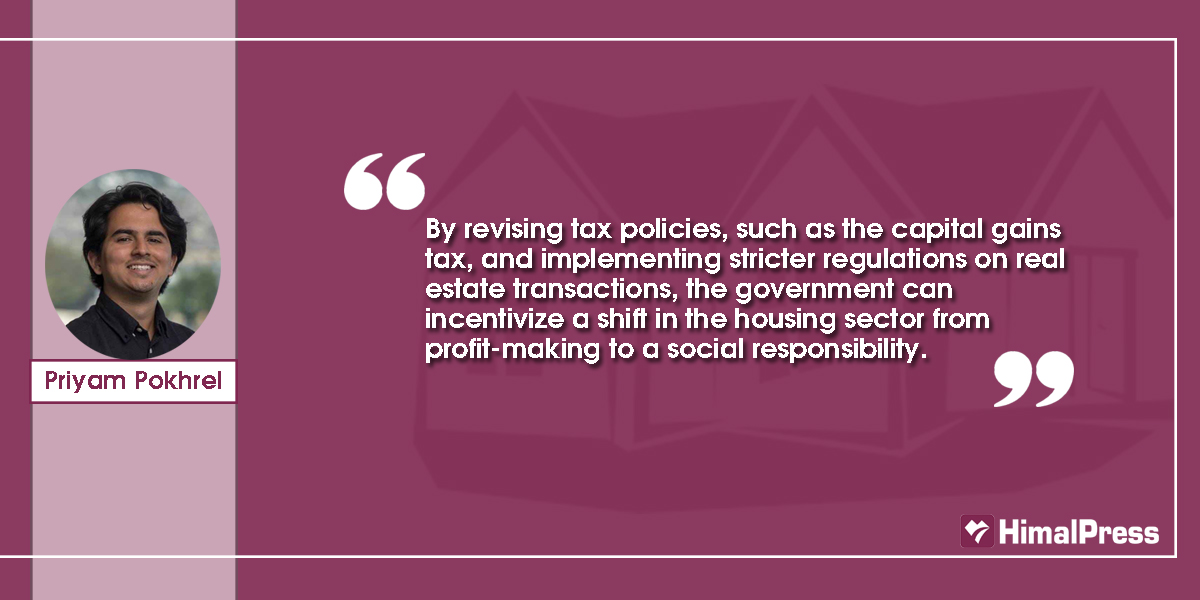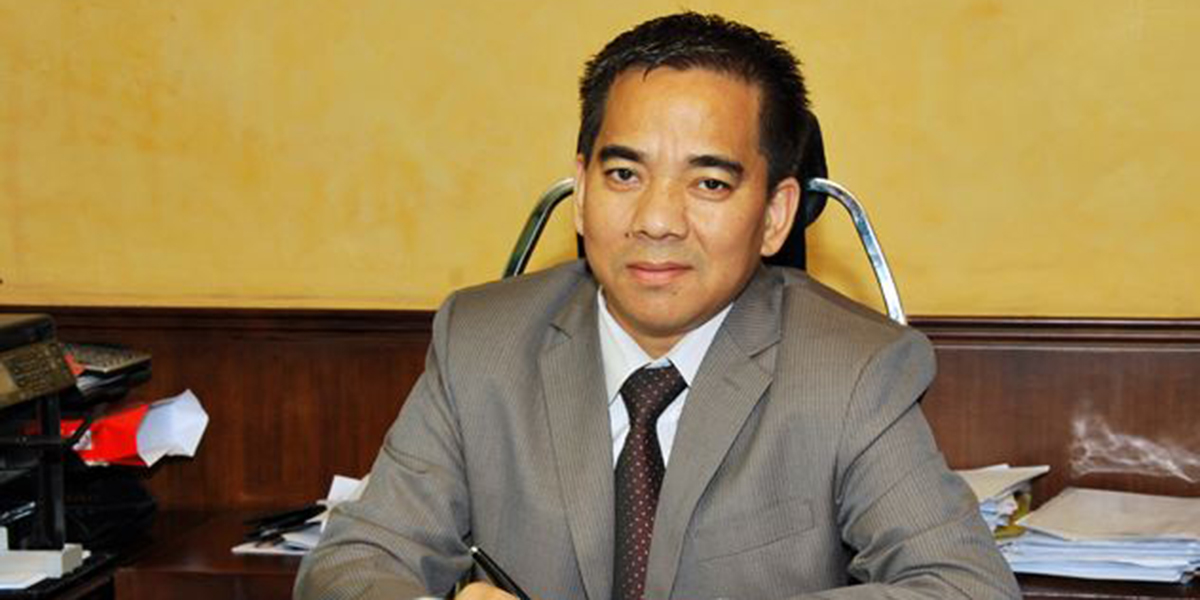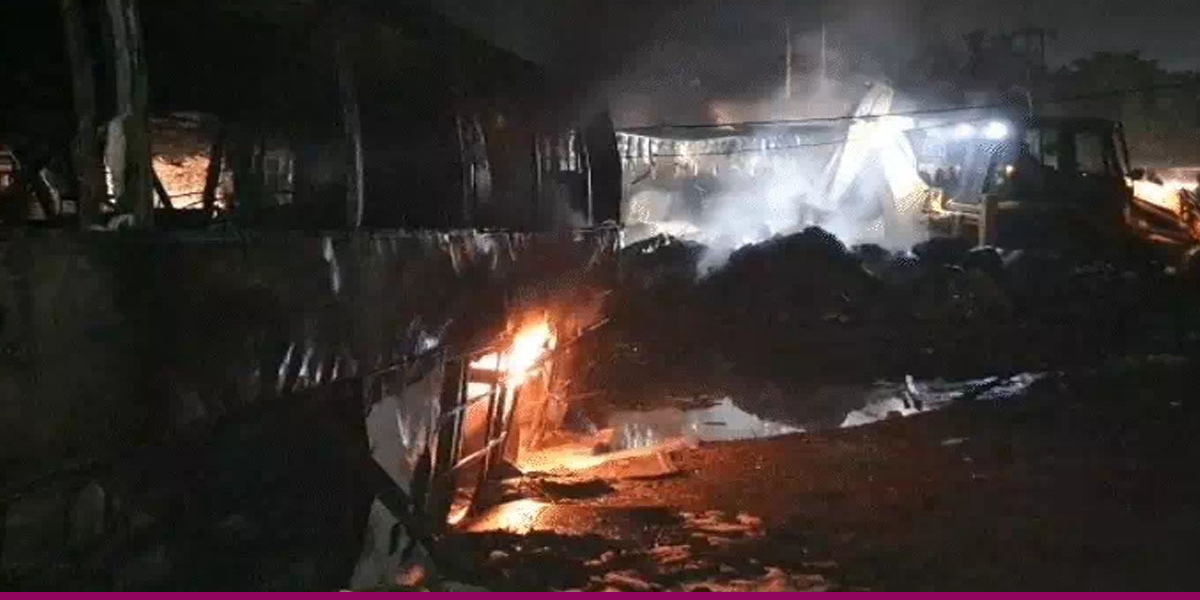
Housing is often overlooked by many Nepalis when considering the numerous crises facing the country. This disregard may stem from the perception that there are more pressing issues that need to be addressed first. Alternatively, it could be attributed to the lack of awareness and media coverage surrounding this matter. Nonetheless, it is crucial to recognize that housing is not only a pressing issue but also holds the potential to significantly impact the nation if left unaddressed. To better understand the gravity of the situation, let’s break it down into a few key aspects. One of the primary concerns is the massive housing shortage in Kathmandu, leading to exorbitant rents. The scarcity of housing options places an immense burden on the city’s residents. Another critical issue is the rampant homelessness within the city. The current Right to Housing Act, enacted in 2018 with the intention of protecting renters, has proven ineffective in safeguarding individuals against forced eviction by landlords.
Before discussing potential solutions to mitigate these issues, it is crucial to evaluate the existing measures in place to address homelessness and affordability concerns in Nepal. One such initiative is the government-run ‘Janata Awas Karyakram’ (People’s Housing Program) introduced in 2009. This program aims to provide suitable housing facilities, with a particular focus on indigenous and marginalized communities. While the program has achieved some success, it is limited in terms of geographical coverage, only reaching 27 out of 77 districts, and targeting specific underserved populations. Over the years, approximately 5,000 families have been served, and around 1,200 housing units are constructed annually.
The private sector, including banks and financial institutions, has also played a significant role in the housing industry. However, unlike the People’s Housing Program, their involvement has contributed to the growing unaffordability of housing for the less privileged, especially in major cities. High-interest rates and inflation further exacerbate the issue, as housing finance offered by these institutions often comes with exorbitant interest rates. Additionally, these institutions require collateral such as a house or land to obtain financing for building or purchasing a home. Furthermore, Nepal’s constitution itself does not guarantee affordable and safe housing for its citizens.
A recent report by the Nepal Rastra Bank (NRB) highlights the alarming trend of property value in the Kathmandu Valley increasing at a rate of 27.7% per year, effectively doubling real estate values every 3.5 years.
Unfortunately, the problems outlined above, coupled with the existing measures, are proving insufficient, and the situation is expected to worsen over time. A recent report by the Nepal Rastra Bank (NRB) highlights the alarming trend of property value in the Kathmandu Valley increasing at a rate of 27.7% per year, effectively doubling real estate values every 3.5 years. This exponential growth in property prices far surpasses the average salary growth in Nepal, which stands at a modest 7.45% year-on-year.
In order to address the housing crisis in Nepal, it is essential to implement a combination of practices and policies that involve both government regulation and contributions from the private sector. First, it is crucial to shift the perspective of the housing sector from being solely profit-driven to a social responsibility of the government. Currently, there is a widely known perception of collaboration between the Nepal government, private organizations/individuals, and bankers to benefit from increased property prices. To counteract this, tighter regulations need to be put in place. One approach is to restrict real estate transactions, allowing them to be conducted exclusively through licensed organizations and companies. Furthermore, it is essential to monitor and regulate the lending practices of banks. Banks should be required to prioritize providing loans to individuals who genuinely seek affordable housing rather than focusing solely on those looking to make investments.
Second, the ‘Janata Awas Karyakram’ needs to be expanded to all the districts. Although the success of this program is not widely known, it has had a positive impact on the lives of thousands of homeless families in rural areas of Nepal.
However, a program of this scale requires funding of a considerable proportion. One potential source of funding could come from revision of the tax system, particularly the capital gains tax. Currently, Nepal levies a capital gains tax of 5% for properties owned for less than 5 years, and 2.10% for properties owned for more than 5 years. To put this in context, countries like the UK have higher tax rates on gains from residential property, with rates of 10%-28%. Even a slight increase in capital gains tax could generate additional revenue for Nepal that could be directed towards providing relief to lower-income families seeking to own a home. This increase could specifically target individuals or organizations within the real estate sector who have a profit-oriented mindset, such as those involved in buying and selling properties as a trade. It is important to note that a comprehensive financial analysis, including relevant sensitivity analysis, should be conducted to fully understand the scope and potential implications of any changes to the tax structure.
A mixture of both tenant protection rights like in Scotland which makes it illegal to unlawfully evict tenants (Cost of Living, Tenant Protection, Scotland Act 2022) and a rent cap like in the UK can go a long way in mitigating the renting issue in the country.
To address the rental housing challenges in Kathmandu, it is important to challenge the prevailing perception of homeownership as the ultimate goal and symbol of wealth and power in Nepal. The traditional owner-occupied model of housing is deeply ingrained in the Nepali population, with many aspiring to build their own houses as a sign of stability and success. However, it is crucial to recognize that this mindset is influenced by the current structure and functioning of the rental market in Kathmandu. The rental market in Kathmandu is primarily dominated by young people, particularly those migrating from other parts of Nepal to the city. It is often assumed that this group of renters is transient and not committed to long-term housing solutions. However, it is important to acknowledge that not all renters fall into this category. There are individuals and families who choose to rent and stay in the same place for extended periods.
The issue here is not about ownership/rentership but rather, as housing expert Jenny Schuertz puts it, is about the predictability in terms of the housing cost you get over the long run. Homeowners can plan their housing finances for an extended period due to the predictable cash outflow associated with homeownership. However, renters in Nepal currently lack this long-term stability. A significant challenge is the absence of tenant protection rights enshrined in the constitution. All power lies within the hands of the landlords in deciding how long a tenant could occupy the rooms they are renting. A mixture of both tenant protection rights like in Scotland which makes it illegal to unlawfully evict tenants (Cost of Living, Tenant Protection, Scotland Act 2022) and a rent cap like in the UK can go a long way in mitigating the renting issue in the country. By introducing a combination of tenant protection rights and rent caps, Nepal can improve the renting landscape. These measures would provide renters with increased stability and predictability, ensuring that their rights are protected and preventing unfair evictions or exorbitant rent increases.
Nepal’s housing policy is indeed lacking some fundamental principles that have been established in the legislation of other countries. A key step towards resolving the housing crisis is to consider changes in tax policies and exercise greater oversight over banks and private companies. By revising tax policies, such as the capital gains tax, and implementing stricter regulations on real estate transactions, the government can incentivize a shift in the housing sector from profit-making to social responsibility. By putting forth potential solutions in the public domain, we can encourage dialogue, collaboration, and refinement until these ideas have the potential to be implemented.
(Pokharel is an audit senior associate at PriceWaterhouseCoopers in the UK.)


















